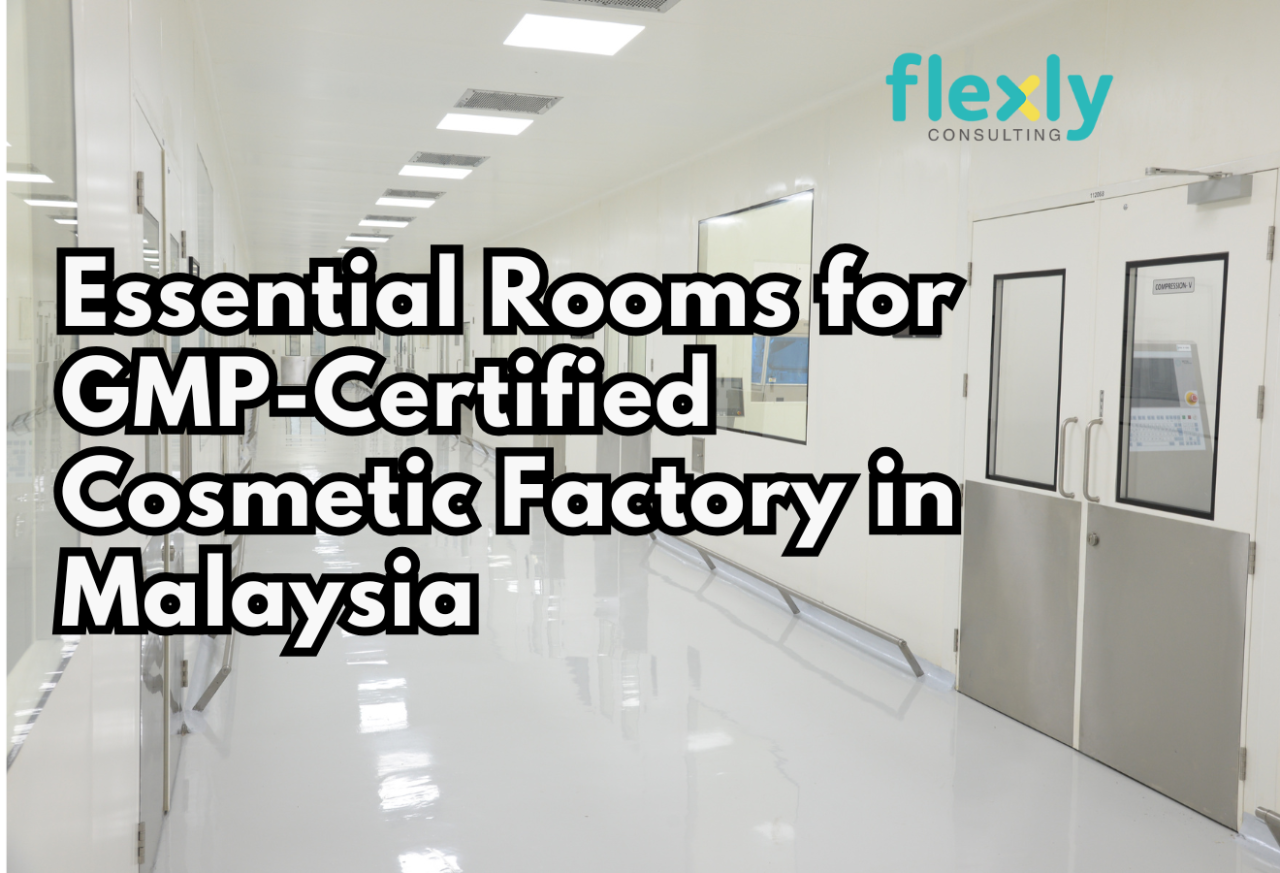

If you’re planning to set up a GMP-compliant cosmetic factory in Malaysia, it’s critical to follow not only international GMP practices but also specific guidelines set by the National Pharmaceutical Regulatory Agency (NPRA) under the Ministry of Health (MOH) Malaysia. Whether you are building a new facility or renovating an existing one, a proper layout and room segregation is a key requirement for compliance.
At Flexly Consulting, we specialize in GMP design tailored to Malaysia’s cosmetics and personal care industry. Here’s a breakdown of the 10 essential rooms every cosmetic facility should include to meet GMP and NPRA expectations.
1. Changing Room
Personnel must pass through a changing room to don GMP-compliant attire before entering production areas. NPRA stresses proper personnel hygiene to avoid product contamination.


2. Sampling Room
A clean and segregated area for sampling raw materials upon receiving. NPRA requires controlled environments for raw material handling to ensure quality and traceability.
3. Weighing Room
Ingredients are accurately weighed in a dedicated room to prevent cross-contamination. Proper ventilation and dust control are emphasized under NPRA’s Cosmetic GMP Guidelines.
4. Mixing Room
This is where product formulation happens. According to NPRA, mixing areas must be easy to clean and designed to reduce the risk of contamination.

5. Filling Room
Filling is a critical point in the manufacturing line where exposure to the environment can affect product safety. NPRA highlights controlled environment, positive air pressure, and equipment hygiene for this room.
6. Buffer Room
Also referred to as an intermediate or airlock room, this space is used to transition between areas of different cleanliness levels, maintaining cleanroom zoning compliance.
7. Packing Room
After filling and sealing, products move to the packing area, which should still follow clean zone principles as per NPRA, especially when labeling and sealing occur.
8. QC Room
Quality Control (QC) labs must be separated from manufacturing areas. NPRA requires a documented testing procedure and proper record keeping to ensure product consistency.
9. RO Water Treatment Room
RO water is widely used in cosmetics for formulation and cleaning. NPRA requires water used in production to be monitored for microbial and chemical quality.
10. Air Compressor Room
Compressed air is often used in automated machines and cleaning. This room should be isolated and equipped with air dryers and filters, in line with NPRA’s utility guidelines.
NPRA-Compliant GMP Factory Layout
The NPRA emphasizes a linear product flow, starting from material receiving and ending with finished product storage, to avoid mix-ups and cross-contamination. The factory layout must clearly distinguish between:
-
Raw material areas
-
Processing zones
-
Clean and dirty pathways
-
Personnel and material movement
Conclusion
Whether you’re launching your first cosmetic brand or upgrading your existing facility, we help you get NPRA and GMP ready — faster and smarter.
Wish to know more about GMP for Cosmetic for your business? Book our limited FREE Consultation right now!



